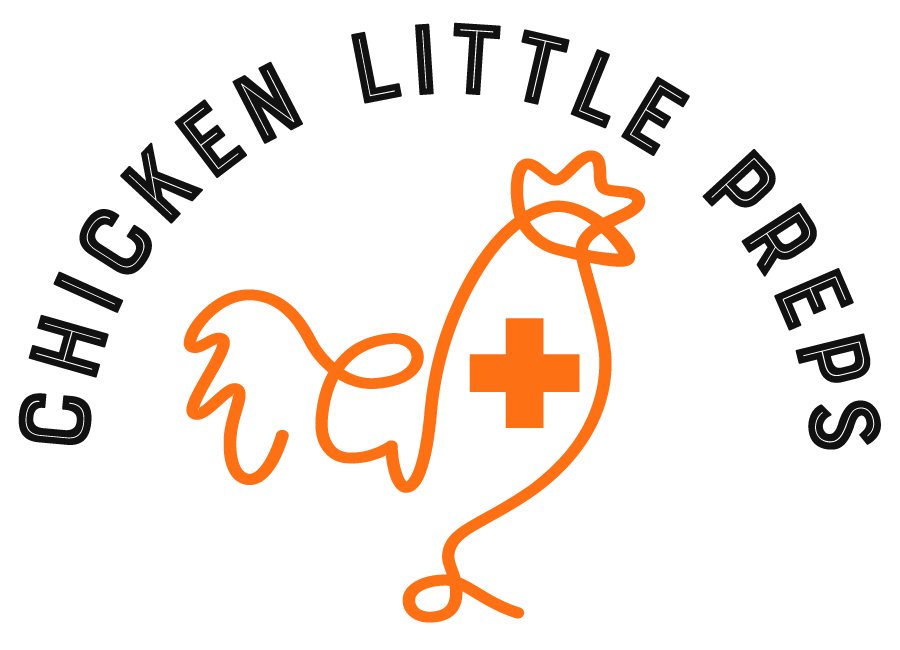Emergency Preparedness Step 2
Make a Plan & Set GoalsRemember, prepping is less about panicking and more about planning.

Make a Plan & Set Goals
Now that you’ve taken stock of what you already have (high five for Step 1!), it’s time to put a little strategy behind your stash. Prepping isn’t just about gear—it’s about knowing why you’re prepping, who you’re prepping for, and how far you want to go.
Don’t worry—this isn’t about spreadsheets or survivalist training. This is the clear-headed planning phase that helps you avoid panic, stay focused, and prep with purpose.
Why This Step Matters
Let’s be honest—“emergency preparedness” can feel vague and overwhelming. Do you need to prep for a blackout or a full-blown zombie apocalypse? (Spoiler: just start with the blackout.)
Making a simple plan based on your real risks and real needs will keep your prepping grounded, practical, and way less stressful.
Questions to Ask Yourself
Who Are You Prepping For?
- Just you? A family of five? Your pets, too?
- Does anyone have special needs—babies, medical devices, mobility issues?
- What do your people actually need to feel safe and comfortable for a few days?
Knowing your crew helps you prep the right gear in the right amounts.
What Kind of Emergencies Are Most Likely?
Not all disasters are created equal. Your plan should match your reality—not someone else’s.
-
Do you live in an area prone to power outages, wildfires, hurricanes, or snowstorms?
-
Is your water supply vulnerable? Is the grid reliable?
-
Could you get stuck at home for a few days? Or need to leave quickly?
Start local and likely. That’s where prepping really pays off.
Do you Have a Communication Plan?
Make sure your flock stays connected if cell service goes down or things get chaotic.
-
Have a general check-in schedule and communicate often so you know where your immediate family members are.
-
Establish local and out-of-town meeting points in case you can’t reach home.
-
Consider backup methods like walkie-talkies, social media check-ins, or—brace yourself—a landline. Yes, like it’s 1997.
-
Print out important phone numbers. Because dead phones can’t scroll your contacts.
Cluck-Worthy Tip: In emergencies, texting usually works better than calling.
How Long Do You Want to Be Self-Sufficient?
We’re not talking about prepping for five years off-grid. (Unless you want to, of course.)
-
Start with a 72-hour goal (covered in Step 3)
-
Then work toward a 2-week supply
-
After that, it’s all about customizing based on comfort, budget, and risk
Think of prepping like building a safety cushion. Start small. Add as you go.
How Can You Financially Prep Without Stress?
Emergency preparedness isn’t just about gear—it’s also about your finances. A little planning now can save you big stress later. Start by asking:
-
Are your credit cards paid down enough to use in a pinch?
(Think: hotel rooms, gas, or last-minute evacuations.) -
Do you have a stash of emergency cash tucked away at home?
(ATMs and card readers often go down during power outages.) -
How much can you realistically set aside each month for emergency supplies?
(Every dollar adds up fast when you’re focused.) -
Where can you trim expenses to free up funds for prepping?
(Cut one takeout meal, cancel a forgotten subscription, or buy in bulk.)
Prepping isn’t about spending a fortune—it’s about being intentional. Budgeting for peace of mind is a power move.
Set Skill Goals, Not Just Supply Goals
Prepping isn’t just about what you have—it’s about what you can do. As part of your plan, think about goals that improve your real-world readiness. Maybe it’s going camping to get comfortable cooking without electricity. Maybe it’s finally signing up for that first aid class. Maybe it’s improving your fitness so you can carry a bug-out bag or chop firewood if needed.
Emergencies often involve more walking, lifting, or problem-solving than we’re used to—building those muscles (physical and mental) now can make all the difference later. Start small, stay consistent, and think of it as leveling up your calm.
Put It All Together: Your Simple Prepping Plan
You don’t need a 30-page binder—just a simple plan that fits your life.
Create a basic outline like this:
-
Goal: Be prepared to shelter at home for 3 days
-
For: 2 adults + 1 toddler + a grumpy cat
-
Risks: Power outages + winter storms
-
Priorities: Food, water, heat, diapers, coffee
Boom. You’ve got a plan. That wasn’t so bad, right?

Bonus Tip: Stay Flexible
Life changes. So should your prep plan. Review it once or twice a year (or when big changes happen—like a new baby, a move, or a new climate reality).
Final Thought
Prepping without a plan is like grocery shopping without a list—chaotic, expensive, and somehow always ends with purchases you don’t really need.
Step 2 is where it all starts to click. You’ll feel a mindset shift: corners of your home start to look like smart storage spots, and your shopping habits begin to quietly change.
That little nudge inside you? The one that says “grab an extra pack of toilet paper” or “maybe pick up a few extra cans of food”? That’s not panic—it’s preparation. The more you listen, the calmer you’ll feel. That’s the goal here: peace of mind, one smart step at a time.
Next Up: Step 3 – Build a 72-Hour Food & Water Supply
Now that you’ve got a plan, let’s fill in the basics—starting with food, water, and a way to heat it up when the lights go out.
Starting a new habit is tough—but staying prepared doesn’t have to be.
Join a community that shares your goals, because together, we can prep for life - not just the next crisis. Subscribe to our email list for friendly reminders, smart tips, and friendly prepping advice.
